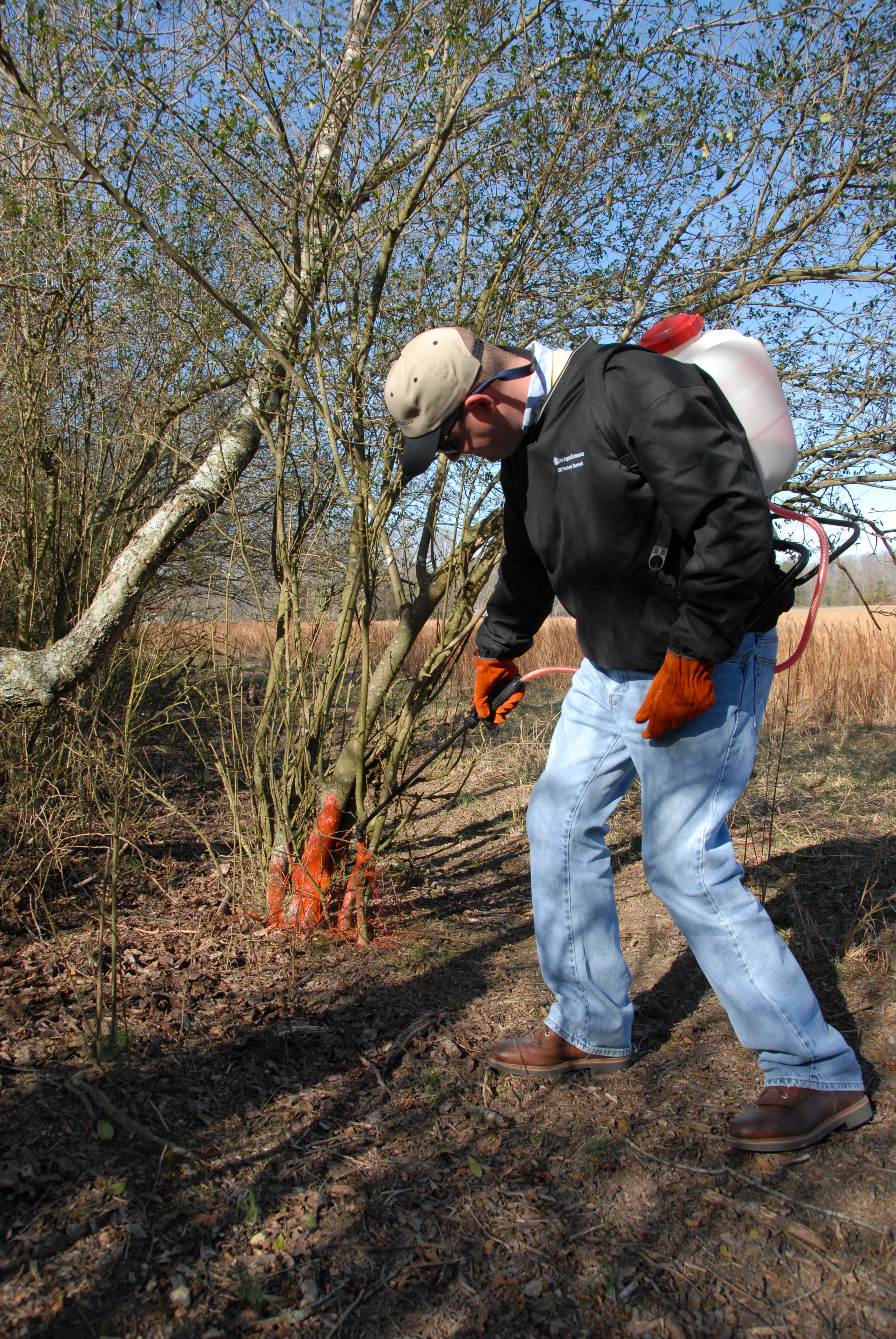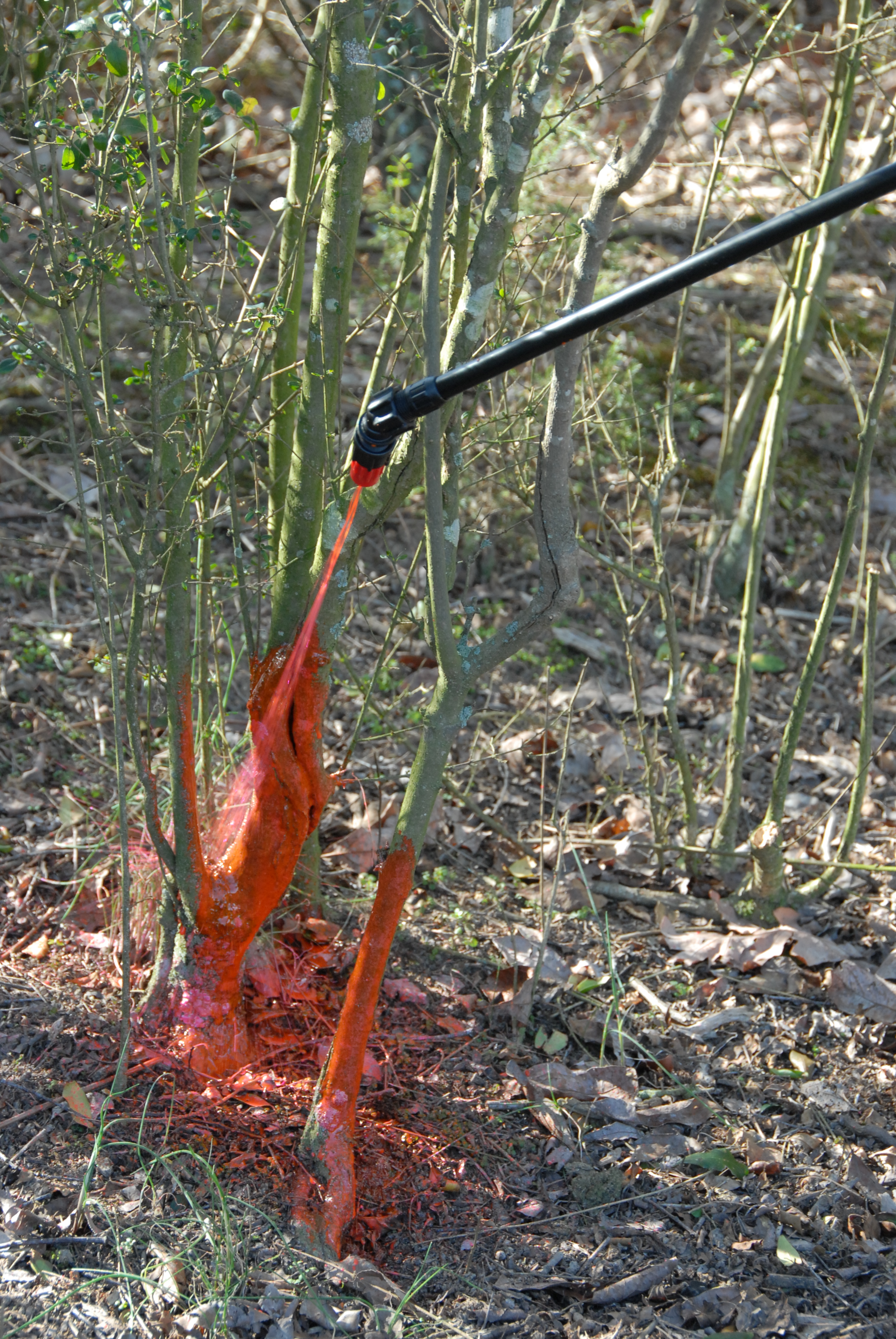INDIANAPOLIS — Now — fall through winter — can be a good time to control brush, especially in the South with its mild, snow-free winters, said Scott Flynn, Ph.D., a field scientist with Corteva Agriscience.
“Most cattle producers think of spraying brush foliage in the summer when leaves are green, but they’re busy with hay and other things. There is another way into a woody plant,” Flynn said. “And it works really well during dormancy.”
That route is through the bark — basal bark (stem) sprays and cut-stump treatments — as individual plant treatments. Since the recommended herbicides work through the bark, these methods aren’t dependent on leaves. Bark treatments are effective year-round, but fall and winter may be a more pleasant time to spray. “Lower temperatures, fewer bugs,” Flynn observed. “And it’s easier to treat around the base of the tree when the surrounding vegetation is down.”
The equipment is simple, and producers easily can do it themselves when they have a little time. These treatments are effective on most woody species.
Oil Carrier, No Water
The mix Flynn recommends for both basal-stem sprays and cut-stump sprays is 25% herbicide —either Remedy® Ultra or PastureGard® HL herbicide — and 75% oil-based carrier (commercial basal oil or diesel fuel). No water. A dye added to the oil-based mix helps indicate what stems have been sprayed.
Those two herbicides are not active in the soil, so these are extremely selective treatments. “If you choose, you can control one tree and leave the one right next to it alive,” Flynn said.
For basal stem applications, apply enough solution to wet the lower 15 inches of the trunk, including the root collar, but not to the point of runoff. “Think of it as spray painting,” Flynn said, “and make sure the solution wraps completely around the trunk.”
The method is effective year-round except when snow or water prevents spraying to the ground line. It works best on woody species with trunks less than 6 inches in diameter at the base of the tree. Any pump-up sprayer will work, Flynn said, but backpack sprayers are handy for larger jobs. Use low pressure and a solid-cone or flat-fan nozzle.
The spray mix and application method provide excellent control of elms, locust, multiflora rose, oaks, Osage orange (hedge, bois d’arc), privet, sweetgum and many other species, Flynn said.
Cut It Down, Keep It Down
If the tree is larger than 6 inches in diameter and rough-barked, control may be erratic with basal spraying. The better option then is cut-stump treatment, Flynn advised.
Cut-stump treatment means cutting the brush and spraying the stump. Use the same 25% herbicide solution and equipment you use for basal-stem spraying. Cut down the tree and spray the sides of the stump, the outer portion of the cut surface (the cambium ring along the inner bark) and exposed roots at the soil surface. Don’t treat if snow or water prevents spraying to the ground line.
“If you have to cut brush out of a fencerow, you’ll want to use cut-stump treatment to kill those live roots,” Flynn said. “Otherwise, resprouting brush comes back pretty quickly. Spraying those stumps will extend the benefits of your work.”

Basal spraying works well on most brush species through the winter.

Basal-stem sprays should wrap entirely around the circumference of the lower trunk.
About Corteva Agriscience
Corteva Agriscience is a publicly traded, global pure-play agriculture company that provides farmers around the world with the most complete portfolio in the industry - including a balanced and diverse mix of seed, crop protection and digital solutions focused on maximizing productivity to enhance yield and profitability. With some of the most recognized brands in agriculture and an industry-leading product and technology pipeline well positioned to drive growth, the company is committed to working with stakeholders throughout the food system as it fulfills its promise to enrich the lives of those who produce and those who consume, ensuring progress for generations to come. Corteva Agriscience became an independent public company on June 1, 2019, and was previously the Agriculture Division of DowDuPont. More information can be found at www.corteva.com.
Follow Corteva Agriscience on Facebook, Instagram, LinkedIn, Twitter and YouTube.
# # #
State restrictions on the sale and use of Remedy Ultra apply. Consult the label before purchase or use for full details. Always read and follow label directions.
® Trademarks of Dow AgroSciences, DuPont or Pioneer, and their affiliated companies or their respective owners.
Contacts
Kacey Birchmier
Corteva Agriscience
515-535-6149
John Wallace
J. Wallace Communications
817-488-7668